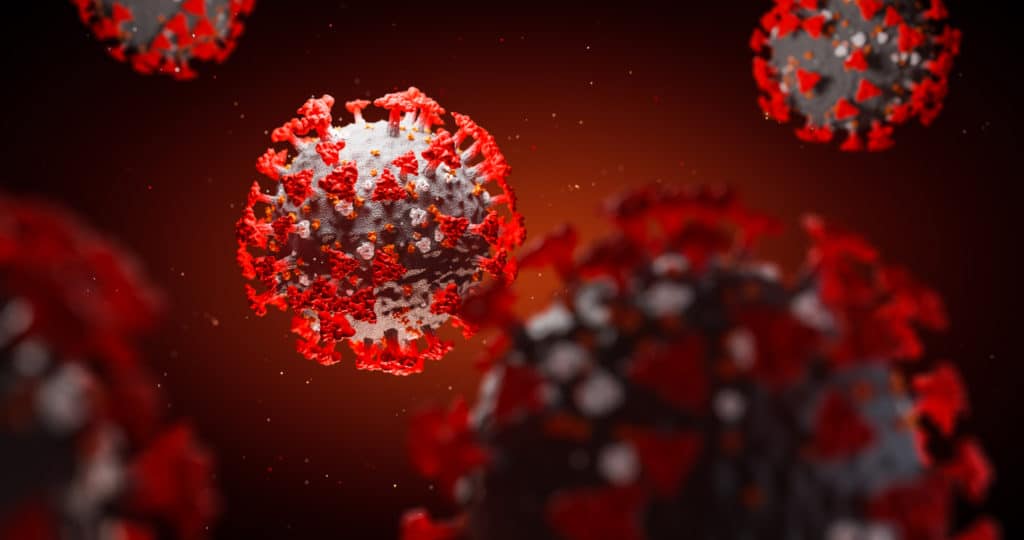As we learn more about SARS-CoV-2, the virus that causes coronavirus disease 2019 (COVID-19) and is often referred to as a “novel coronavirus,” it is important to understand what makes this virus unique and what is meant by the term “novel.”
There are hundreds of different coronaviruses, most of which are found in animals such as pigs, camels, bats, and cats. But they can sometimes jump from animals to humans. When they do, they can cause illnesses that affect the upper respiratory tract (or upper breathing airways) — like the common cold.
It’s very rare that animal coronaviruses infect people and then spread between people. However, three of the seven coronaviruses known to affect humans, which now includes SARS-CoV-2, have emerged from animals over the last two decades, and they’ve caused serious, widespread illness and death.
What does “novel” mean in medicine and virology?
The word “novel” originated from the Latin word “novus,” which means “new.” In medicine, “novel” usually refers to a virus or bacterial strain that was not previously identified. COVID-19 is a new disease, caused by the novel, or new, coronavirus SARS-CoV-2 that was not previously seen in humans.
What is a novel coronavirus, specifically?

Coronaviruses are a family of viruses named for the crown-like spikes on their surface. The word “corona” itself means “crown.” Although most coronaviruses are found in animals, the first human coronaviruses were identified in the mid-1960s, and seven, including SARS-CoV-2, are known to affect humans today. When animal coronaviruses evolve and are able to infect humans, these viruses are considered to be novel. Over time, these viruses change to be able to attach to different host cells, allowing them to enter the cells of new species. Since these viruses had not been seen before in humans, scientists and researchers must learn how the virus infects human cells and causes disease in order for them to develop potential treatments and vaccines.
COVID-19 is caused by a different coronavirus than those that cause the common cold. Four of the seven human coronaviruses typically cause mild to moderate illness and account for 10% to 30% of upper respiratory tract infections in adults. The other three, including SARS-CoV-2, can cause more serious respiratory illness. More on this below.
What about novel influenza (flu) viruses?
When you’ve heard of novel viruses in the past, it may have been in the context of novel influenza (flu) viruses, and not coronaviruses. We have seasonal influenza type A and type B viruses (influenza A and B viruses) that appear during each year’s cold and flu season, but there are also novel influenza A viruses that are not seasonal. Just like novel coronaviruses, these generally circulate among animals but have caused outbreaks in humans.
Those of most recent concern include avian influenza A viruses (bird flu) that humans get from exposure to infected poultry, and swine/variant influenza A viruses (swine flu) that humans get from exposure to infected pigs. A significant concern of these novel influenza A viruses is their ability to spread from person to person, potentially causing a pandemic as we see today with SARS-CoV-2.
When have there been examples of other novel coronaviruses?
SARS-CoV-2 is the first novel coronavirus to cause a pandemic in the last century, with others previously caused by novel influenza A viruses. Two other recent examples of novel coronaviruses have been SARS-CoV and MERS-CoV.
SARS-CoV, the virus that causes severe acute respiratory syndrome (SARS), was first reported in Asia in February 2003 and quickly spread to 26 countries before being contained after about 4 months. Since 2004, there have been no reported cases of SARS.
Almost a decade later, MERS-CoV, the virus that causes Middle East respiratory syndrome (MERS), emerged in Saudi Arabia in September 2012, spreading to 27 countries. About 80% of reported cases of MERS have occurred in Saudi Arabia. Only 2 people in the United States tested positive for MERS, and they both recovered.
Is SARS-CoV-2 (COVID-19) the same as SARS-CoV (SARS)?
Although there are some similarities between SARS-CoV (SARS) and SARS-CoV-2 (COVID-19), they are caused by different viruses with different disease characteristics:
- People who get COVID-19 appear to be able to spread the virus earlier on compared to people who get SARS.
- With COVID-19, people who have minimal symptoms or are completely asymptomatic can still potentially transmit the diseases. On the other hand, SARS was only reported to be transmitted from people who already had symptoms.
What do novel viruses mean for public health?

Novel viruses present a lot of questions for public health that need to be answered quickly in order for us to contain the spread. With novel viruses, we usually don’t have a lot of information about transmission from person to person, so we need to exercise extreme caution when we’re around other people, taking care to maintain distance and wash our hands frequently.
Our bodies also don’t have immune defenses prepared to tackle the virus. With colds and seasonal flus, for example, our bodies have likely encountered these viruses before, so our immune systems have developed antibodies to protect us in case we come across these viruses again. That’s not the case with novel viruses, meaning none of us carry antibodies for the virus. We also won’t yet have vaccines or established treatments to prevent or treat the diseases caused by these viruses.
With COVID-19, researchers are able to build upon earlier research from the SARS and MERS outbreaks. Within 2 weeks of discovering COVID-19, National Institute of Allergy and Infectious Diseases (NIAID) researchers were able to figure out how the virus gets into human cells. And within 2 months, they began sponsoring phase 1 trials of a potential treatment (remdesivir) and a potential vaccine (mRNA-1273). You can read more about the latest research on COVID-19 treatments here and COVID-19 vaccines here.
What we do know about pandemics is that they progress through a standard interval framework which is used to inform public health actions. The intervals include:
- Pre-pandemic investigation and recognition: This is when we’ve detected the virus, but case numbers are still low. Researchers are quickly trying to learn about the virus, so we know how to prevent its spread, and treatments and vaccines can be developed.
- Initiation of the pandemic wave and acceleration: This is when cases rise and hit a peak. As cases increase, facility closures, social distancing, medications, and vaccines (if available) may be used to slow the spread of the disease.
- Deceleration: This occurs after the peak. As we implement measures to contain the disease, cases trend downwards close to zero.
We progress through these intervals depending on the virus characteristics and public health response, ending with learning and preparing for the next time. Although we are seeing varying activity of the disease across different parts of the country, the United States collectively is in the acceleration phase of the COVID-19 pandemic. Public health measures, expansion of testing, and the development of treatments and vaccines are critical to slow the spread and move towards deceleration and reopening.
This article originally appeared on GoodRx.com

Alyssa Billingsley
PharmD, RPh
Pharmacist on the GoodRx team with a decade of experience in pharmacy. Adjunct faculty at St. Louis College of Pharmacy.


